Product
Exploration of Map Organization
tl;dr Spring is the perfect season for travel, and exping v1.4 brings exciting new features: "Map Grouping" and "Real-Time Collaborative Editing (Beta)". Now you can create maps with friends and use the grouping feature to craft maps with rich, themed content.
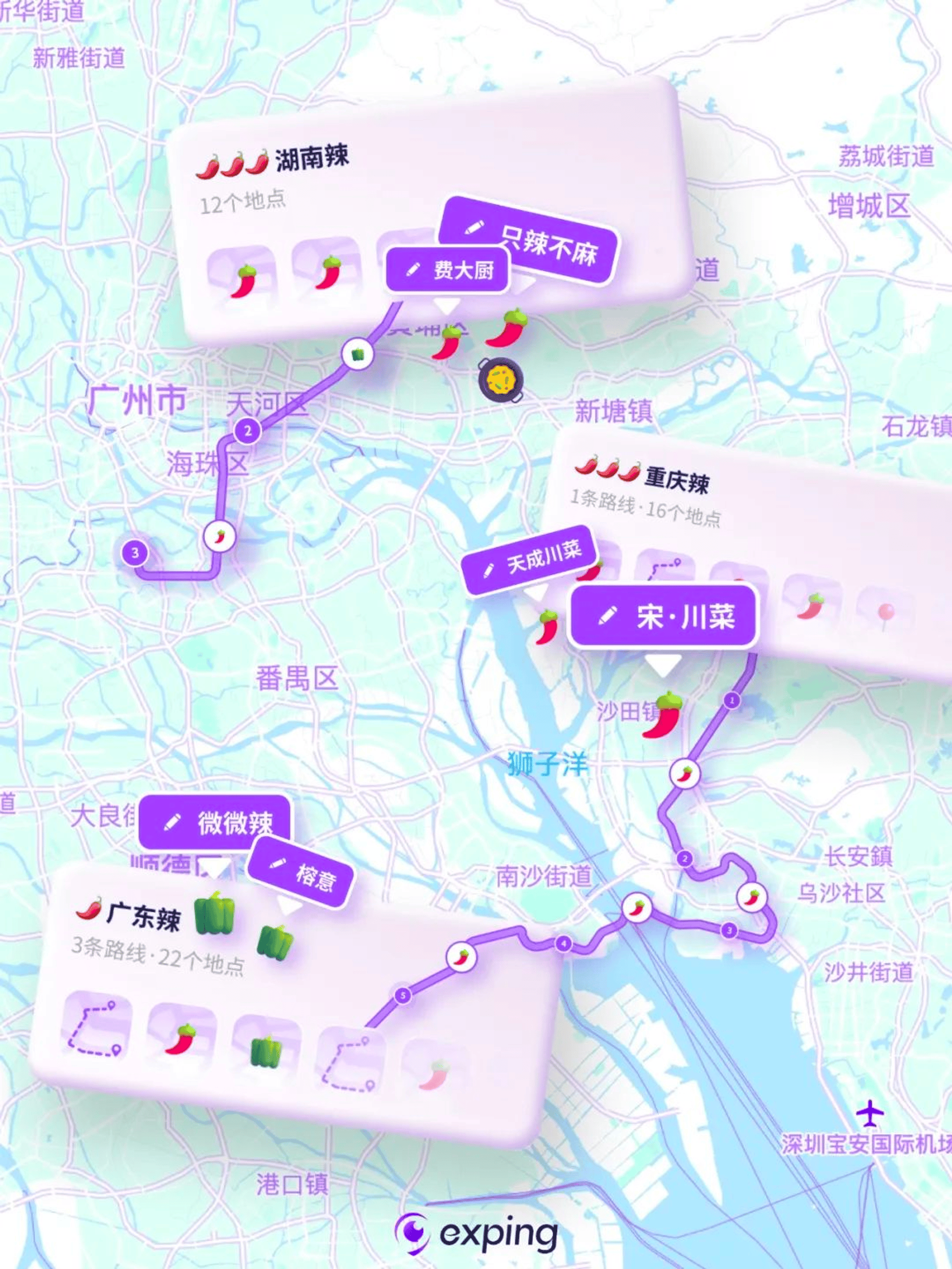
Spring is the perfect season for travel, and exping v1.4 brings exciting new features: "Map Grouping" and "Real-Time Collaborative Editing (Beta)". Now you can create maps with friends and use the grouping feature to craft maps with rich, themed content.
With this new release, we want to share the story behind the map grouping feature.
A Rich Map
Creators make various types of maps on exping every day. At exping, we constantly ponder: what information should a rich and interesting map provide to its readers?
Locations and routes are essential elements of a map. The locations marked by creators are the core content they wish to express, like words in an article. Routes, composed of these locations, connect them in time, sequence, and space, making the flat locations more vivid, like illustrations in an article, giving readers a more visual experience.
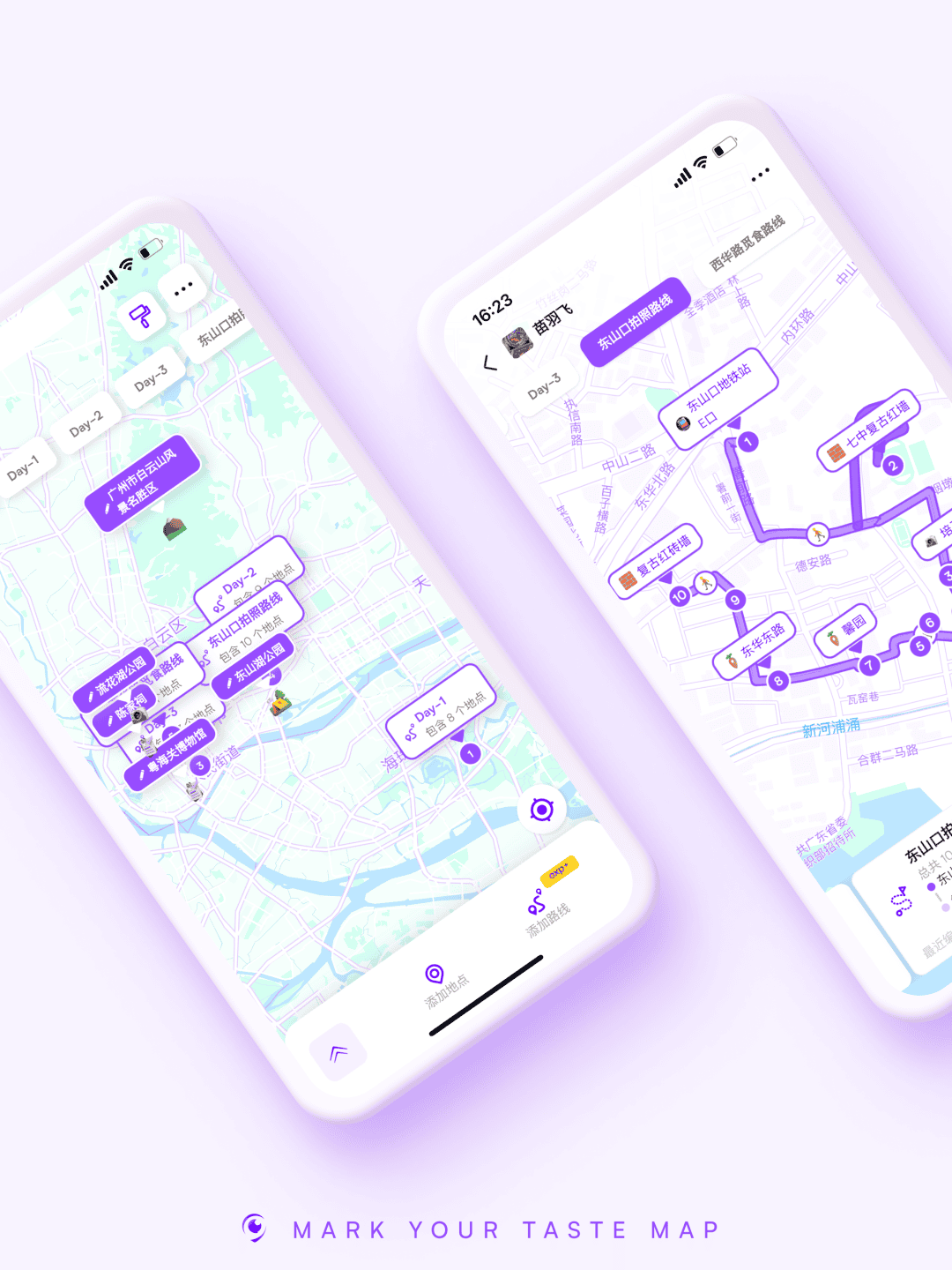
However, locations and routes alone are not enough to flexibly express the creator's intent.
We've found that the information displayed on maps usually has a theme, such as food maps, shopping maps, and sightseeing maps.
Themes can make maps more hierarchical and in-depth. A good map should cover a diverse range of themed information. For example, a city map can include multiple themes like culture, history, food, and shopping, allowing users to understand various aspects of the city.

Therefore, we believe a rich and interesting map should encompass different themes and information, enabling users to better understand the relationships and connections between locations, providing a more comprehensive perspective.
Map Content Organization
To achieve this, exping needs a better way to organize maps, helping creators better present content and users quickly find the information they need.
Currently, exping uses routes as the main organizing theme, but this isn't always appropriate because themes don't necessarily follow specific routes or sequences.
For example, if we want to showcase an art gallery map or a camping-themed map, there may not be a clear route or order. In this case, using routes as a grouping method would be unsuitable, as they don't possess route attributes and are merely collections of similar points. The route connections can negatively impact the expression of the theme.
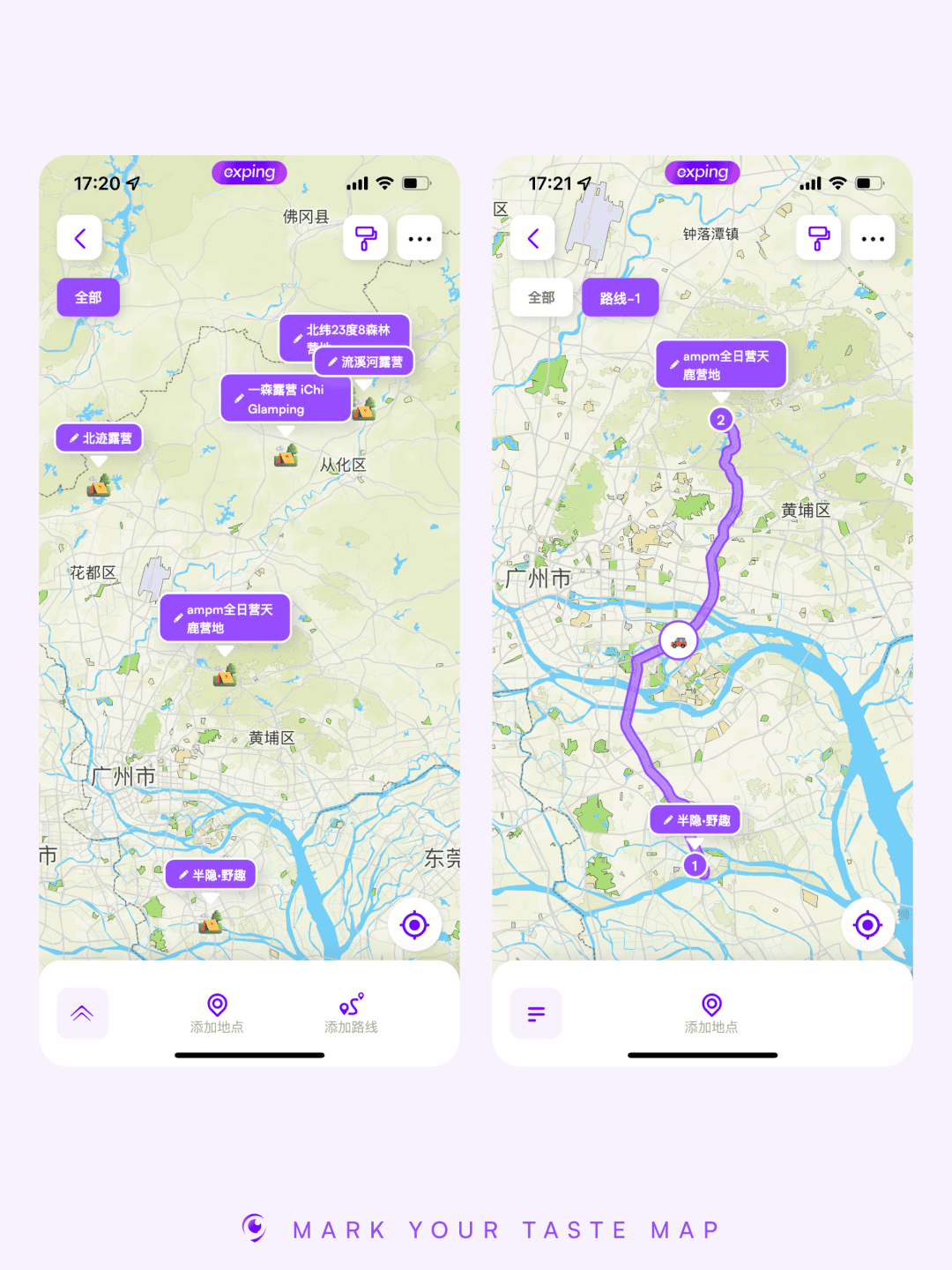
Some excellent creators attempt to categorize themes by modifying the emoji symbols of locations. For instance, in a Shanghai food and entertainment map, all coffee shops use the "☕️" symbol, and all Japanese restaurants use the "🍣" symbol. While this effectively expresses thematic information, there still isn't a convenient way to quickly retrieve this type of content.

Map organization and navigational ease of use are crucial factors in map design.
A good map should help readers quickly and accurately find the information they need and provide intuitive, easy-to-understand navigation. Conversely, if the map lacks organization and navigational ease, readers can easily get lost in the vast sea of location information, reducing the map's practicality and appeal.
New Map Grouping Feature
We believe there's room for improvement in exping's thematic information organization. Therefore, we've added a grouping feature, allowing creators to more freely classify and manage routes and locations without being limited to specific routes or sequences, making it easier to create different themed content.
In exping v1.4, the former route position has been replaced with group tags. You can create different groups according to your preferences, freely name and divide themed content, and display up to 20 groups.
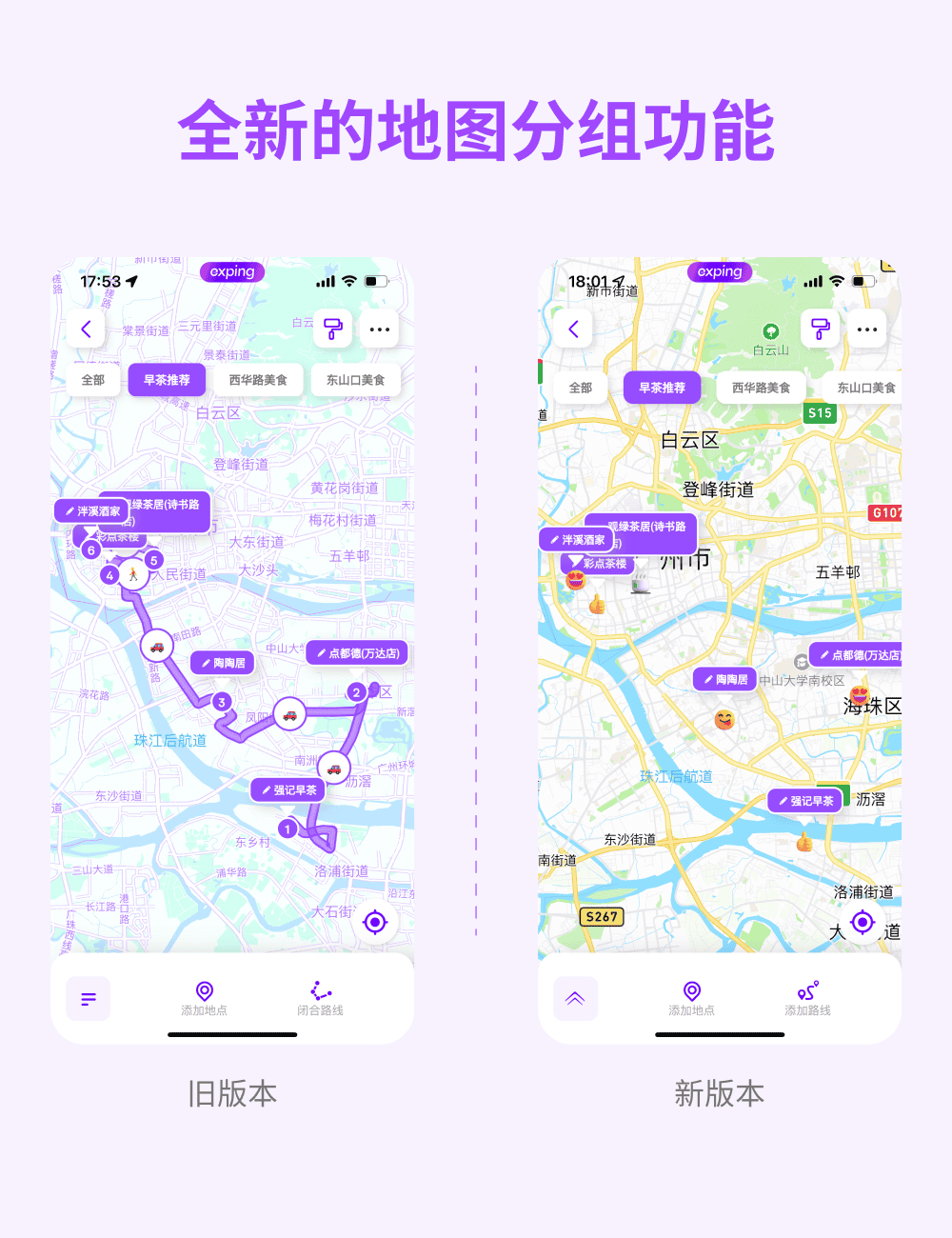
After creating groups, you can add existing map locations and routes to them. You can also long-press to select routes and locations on the map and move them into corresponding groups.
Groups act as filter tags, helping you quickly filter and display specific themed content.
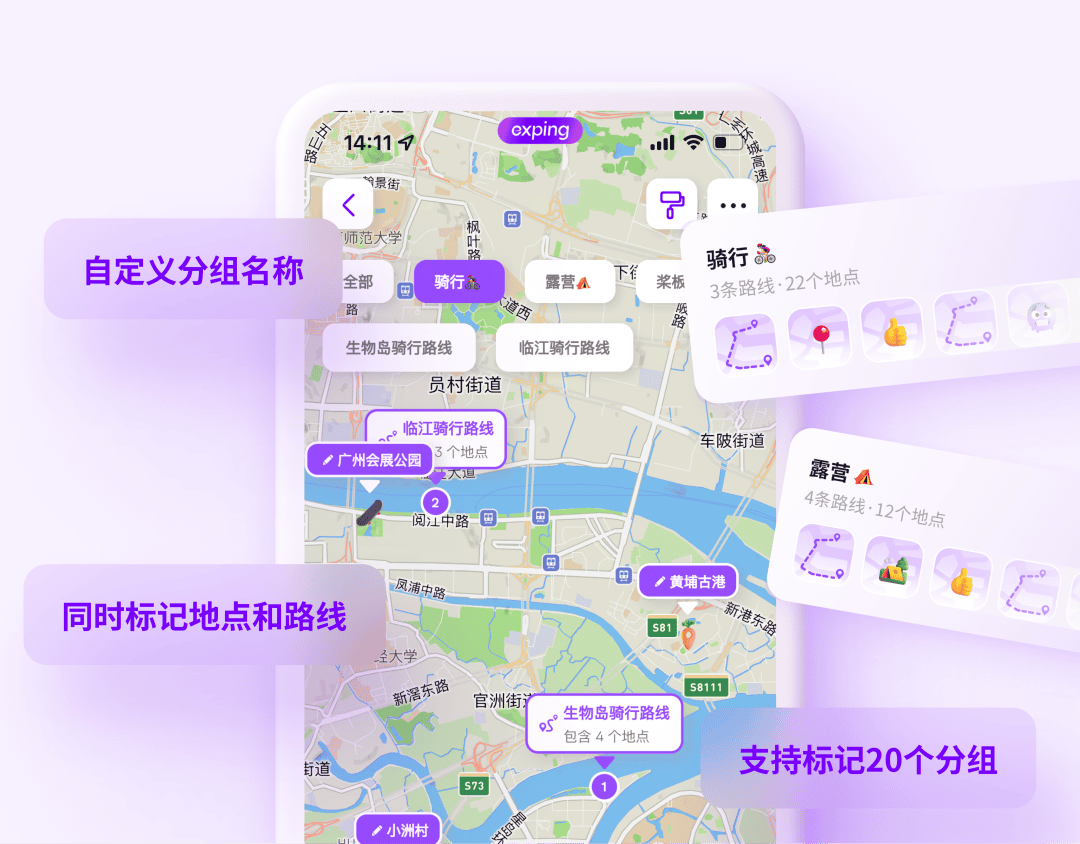
The new group cards can also be seen in the Map Story Curation. Both creators and readers can use groups to quickly find corresponding route and location information.
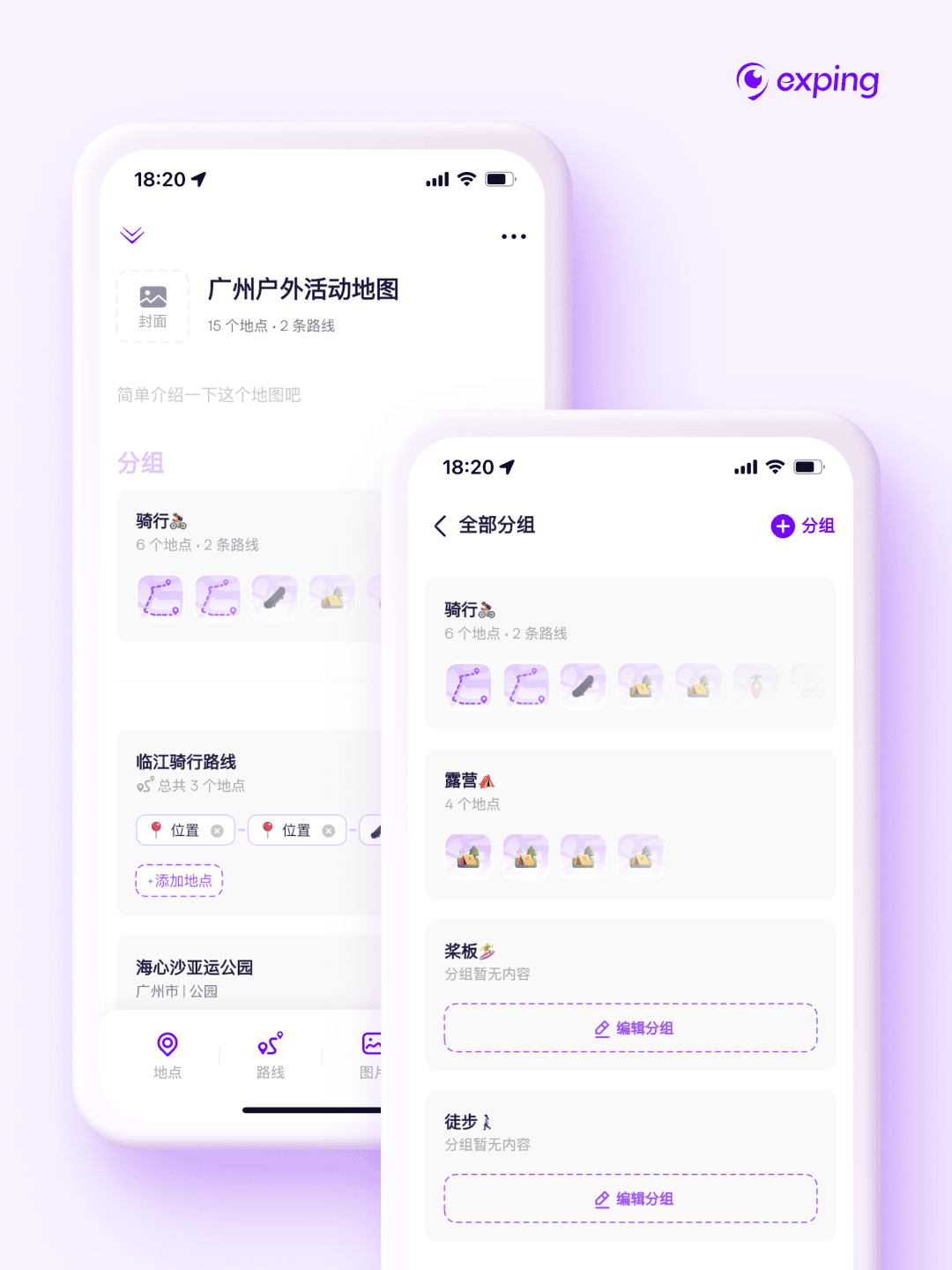
By categorizing and grouping locations and routes according to different themes, the map's hierarchy becomes more evident, improving map navigation.
How Grouping Helps Express Themes
Map grouping opens up more creative possibilities and content organization methods for map creation.
When discussing theme splitting in maps, it's natural to think of the "Cantonese Food Guide", where recommended food shops are classified into groups like "Morning Tea", "Desserts", "Claypot Porridge", and "Cantonese Cuisine", allowing anyone who wants to taste Cantonese food to select the most appealing category.
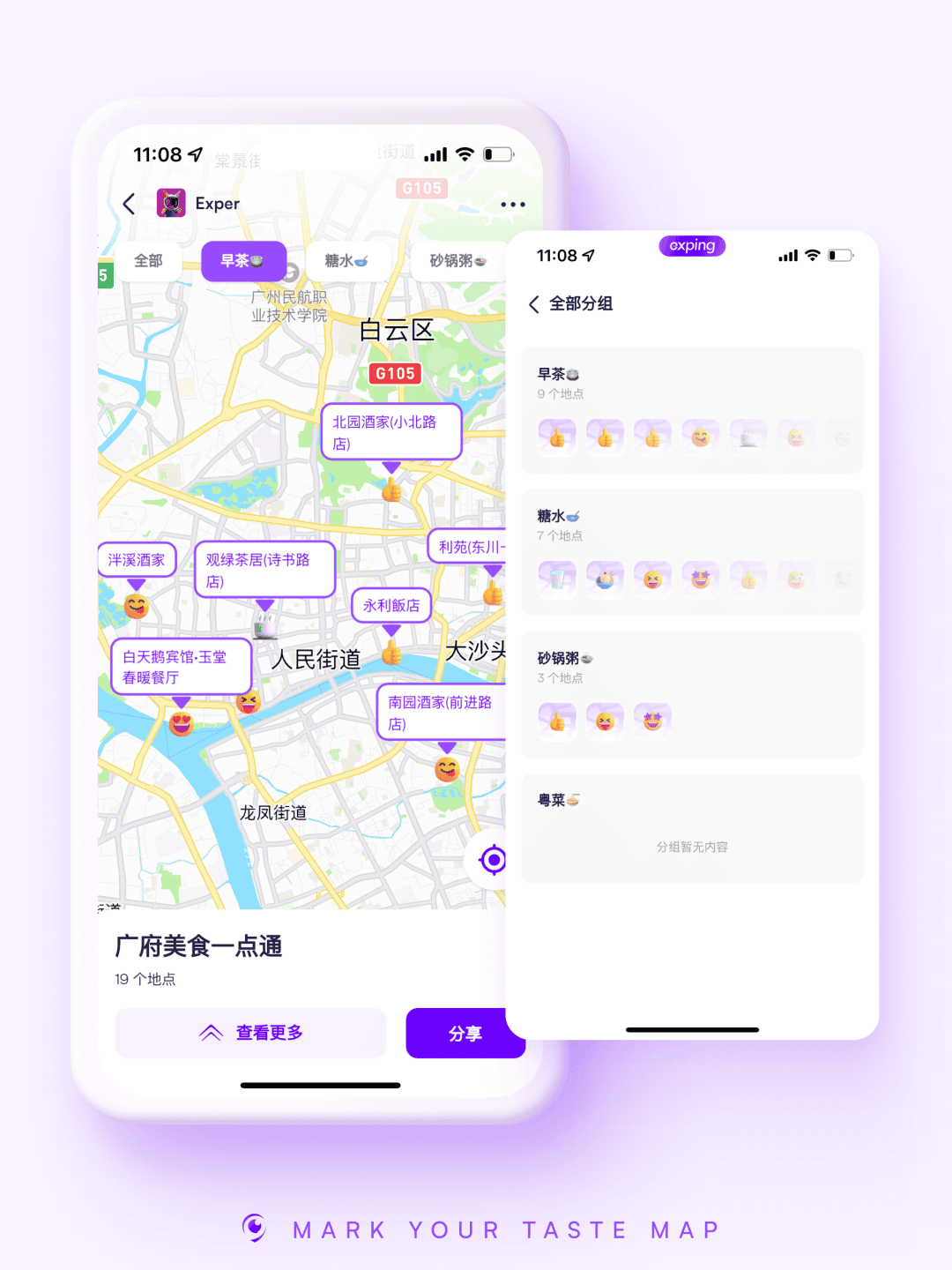
Previously, there was a viral pet-friendly hospital map on exping. With grouping, the single pet hospital map can be expanded into a "Pet Life Map", categorizing pet shops, pet hospitals, pet grooming salons, pet-friendly restaurants, and pet walking parks into different groups.
Readers can then obtain more complete pet-related information in one map, turning it into a "Pet Life Surrounding Guide".
There are many more scenarios to explore with grouping:
Hierarchical Display
For information of the same theme, the grouping function can display it hierarchically.
For example, when creating a "Guangzhou Tony's Barbershop Guide Map", you can divide all recommended and collected barbershops into groups like "Top-tier", "Average 100 per person", and "Affordable Quick Cuts" according to price. This allows different readers to quickly navigate and locate their desired price range.
Cycling enthusiasts can also divide their "Cycling Map" into difficulty groups like "Hell Mode", "Veteran Trails", and "Beginner Routes", allowing each reader to intuitively choose suitable cycling routes.
Schedule Display
Grouping also performs well when handling time-sensitive themes. For instance, in a "Travel Itinerary Map", groups can be set as "Day 1", "Day 2", "Day 3"... to arrange the travel plan according to the schedule.
For exhibition and event organizers, grouping by date can more intuitively express daily booth information, making it easier for the audience to obtain information.
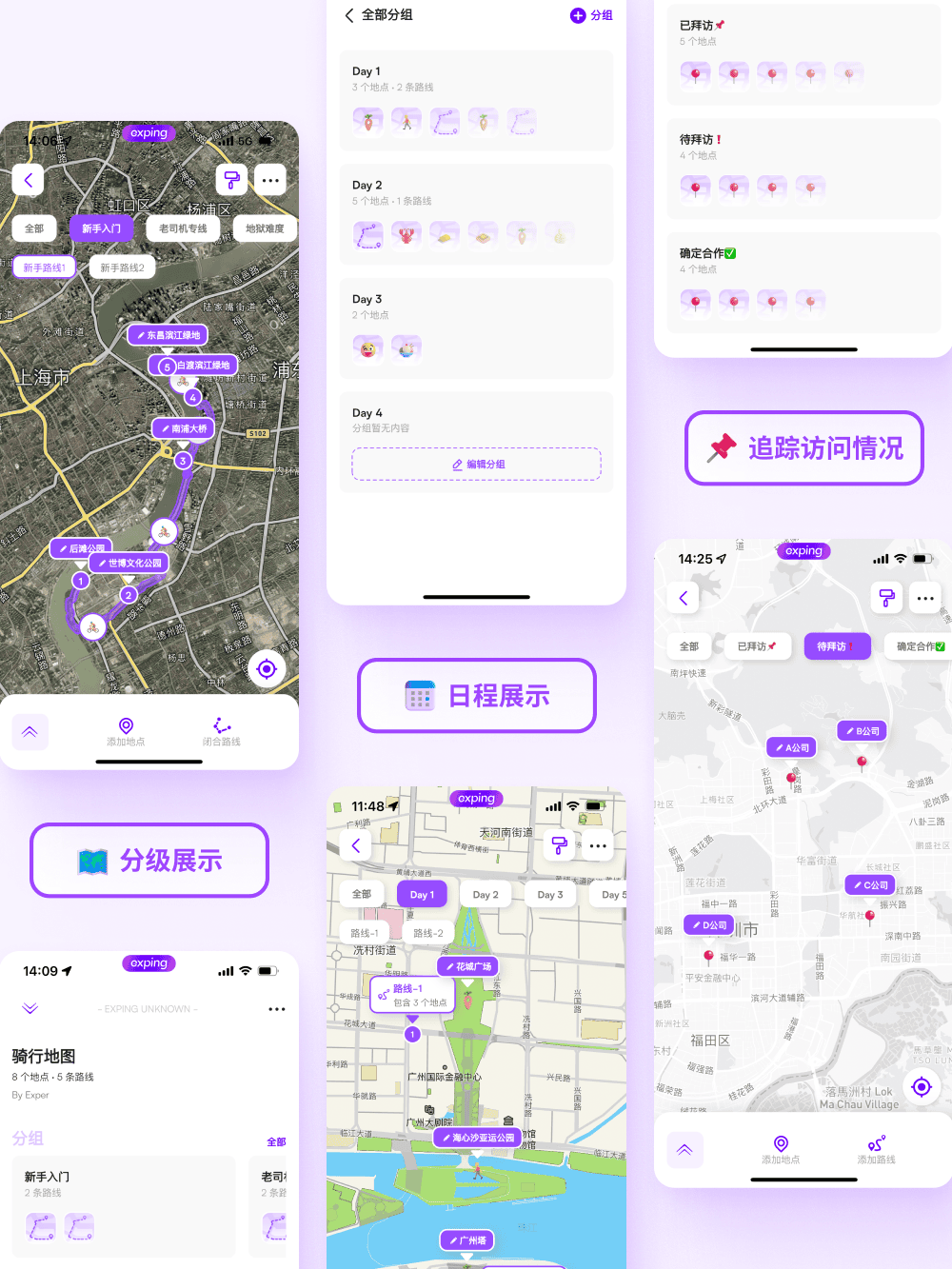
Tracking Visits
With grouping, you can even mark the visited shops in your "Must-visit Hand-drip Coffee Shops" as the "Visited" group and the unvisited ones as the "Unvisited" group. This way, you can clearly track your visit status, like a map version of a Todo list.
For business users, this grouping method can also be applied to customer management, such as "Customer Visit Map" and "Customer Transaction Status Map".
Grouping can do much more:
-
If you're a book lover, create a "Reading Map" and group your frequently visited bookstores, cafes, and parks into "Casual Reading Spaces", "Artsy Shops", and "Green Havens". You can even create an "Antique Bookstores" group to collect old bookstores with stories.
-
If you have a fitness habit, create a "Training Map" and group nearby running paths, cycling trails, gyms, etc., into "Running", "Cycling", "Yoga", and "Weightlifting", so you can always find a suitable place to exercise.
-
If you're a dad with kids, create a "Parent-Child Map" and group playgrounds, children's museums, family restaurants, and other places parents often visit, making it convenient to take your children out on weekends.
-
If you're a photographer, create your own "Photography Map". Group street art and murals into "Urban Colors", city buildings into "Urban Landscapes", and pedestrian streets and cultural communities into "Urban Humanity". Before going out to take photos, open this map and easily find nearby great spots based on your mood by selecting a group.
Enhanced Browsing Experience
The exping web browsing experience has been well-received since its launch. Creators and readers enjoy browsing interactive dynamic maps on large screens. With the release of exping v1.4, we bring an even more outstanding exping web browsing experience.
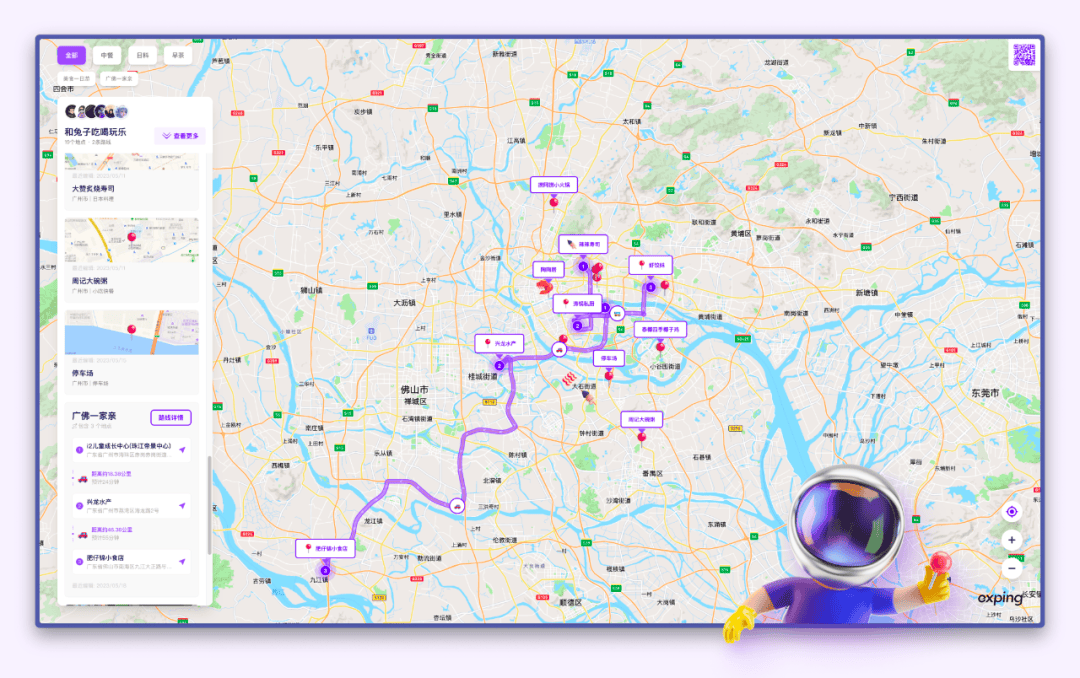
In the Map Story Curation, routes will be presented in a more exquisite form, with more intuitive display of transportation and mileage. You can also directly view location details in the Curation without jumping to additional web pages.
Moreover, thanks to the optimization of the web framework, we officially support directly embedding maps from exping into Notion documents, presenting your collected locations and maps in an interactive format within your documents. We believe this will make your personal archives and note-sharing more creative.
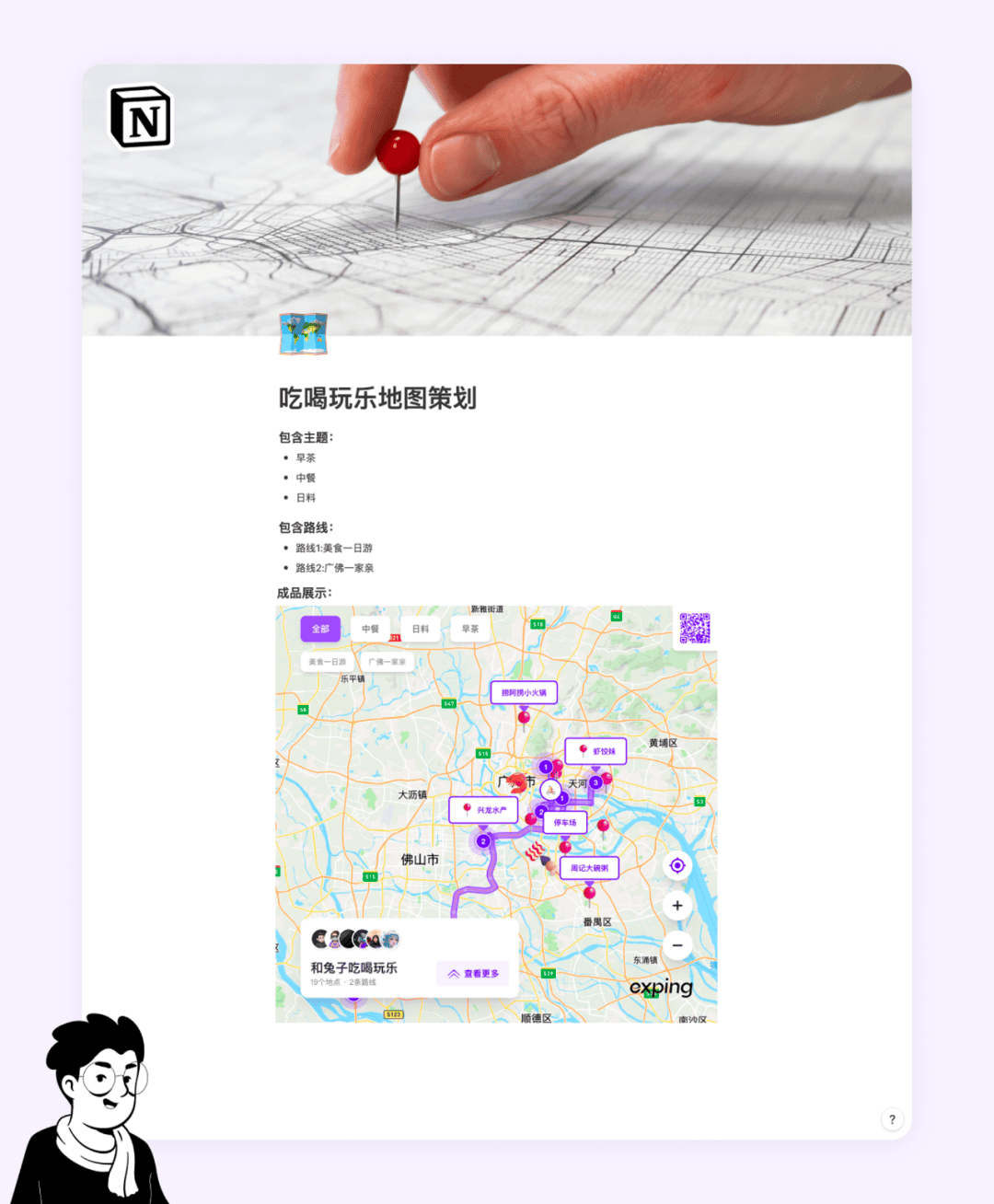
Not Just Browsing, But Creating
The grouping function allows creators to highly customize the classification and presentation of maps, no longer limited to routes.
Living in this information-overloaded era, we often feel decision fatigue. The grouping function can help you draw out several clear areas in the vast ocean of locations, finding the most attractive direction for you. You can also use grouping to string together locations and routes into a more three-dimensional picture based on different dimensions such as time, season, and theme.
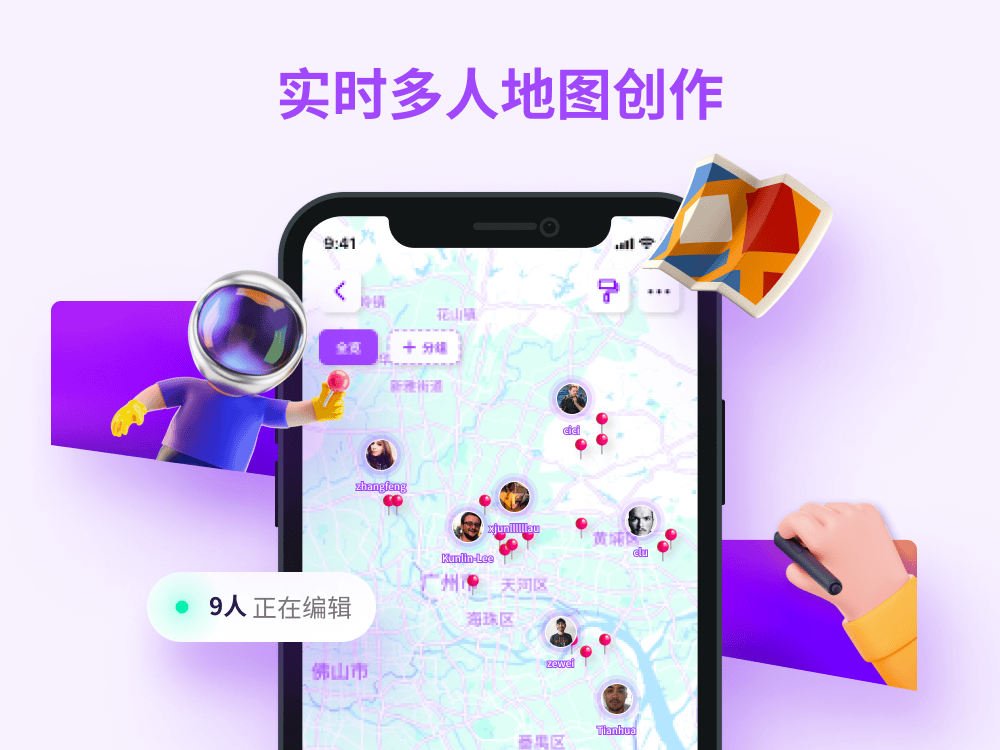
exping's vision has always been: Everyone is a curator.
Therefore, we hope that readers browsing these maps will also try to create their own maps and share with us the different worlds in their eyes, using maps to tell those unique stories.
exping v1.4 also introduces "Real-Time Collaborative Editing (Beta)". Now you can invite your friends to create maps together, leaving more people's footprints and sharing in the same map.
Share